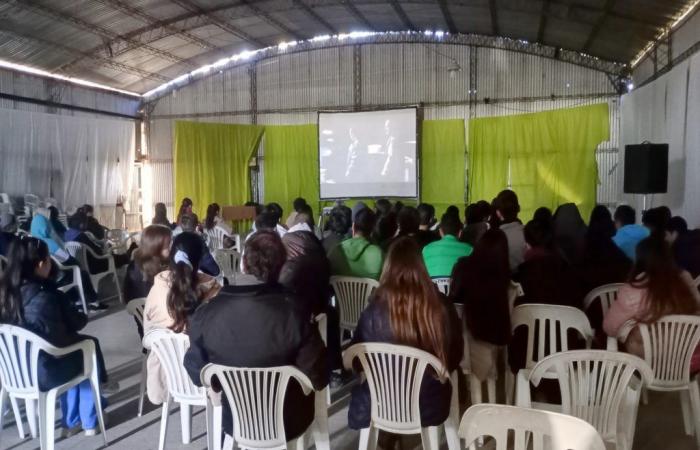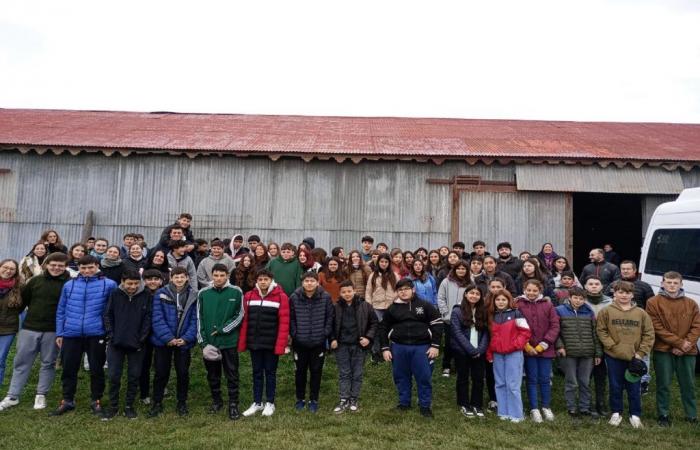This week, 400 students and their teachers enjoyed film screenings in six schools in four communities in the Paraná and Nogoyá departments. Curiosity, excitement and learning were part of the experience lived by children and adolescents.
The Cinema in Schools program of the Culture Secretariat of Entre Ríos continued this week with a three-day tour of establishments in the province. Some 400 children and adolescents with their teachers were the protagonists of six film screenings in schools in the departments of Nogoyá and Paraná.
On Tuesday the 25th, three screenings were held together with Schools No. 10, XX de Septiembre, and No. 5, Ayacucho, in the town of XX de Septiembre, Nogoyá Department.
On Wednesday, two screenings were held with Schools No. 66, Miguel Poletti, and No. 77, Antonio Sagarna, from María Grande Primera, Paraná Department. It is the first time that the program that promotes national and regional cinema, through the Audiovisual Institute of Entre Ríos (IAER), an organization dependent on the Ministry of Culture, came to this town.
And on Thursday, there was a joint screening with Schools No. 63, Yapeyú, and No. 63, El Ramblón, from the Paso de la Arena and El Ramblón communities. The function was held in the facilities of the first school, being the first time that the IAER team visited said place.
It should be noted that the Cinema at School program, since it began, reached establishments in seven departments of the province: La Paz, Villaguay, Colón, Tala, Gualeguay, Paraná and Nogoyá.
The agenda of functions implemented by the Secretariat of Culture of Entre Ríos, through the IAER, carries out the criterion of prioritizing accessibility to rural and urban schools in the province.
Fabián Muteverría, a member of the IAER, highlighted the emotionality generated by the visits: “Setting up the screen and turning on the projector is a special moment, because we contribute to the dissemination of our cinema and to the smiles, surprise, creativity and learning of the children and their rural schools.”

He added that “in each place, the arrival of the Program represents an event. Children, young people, families, teachers and neighbors organize themselves to make the day unforgettable and contribute to their daily lives.”
The member of the program team highlighted the emotional experience and the curiosity it generates in the youngest children: “In Paso de la Arena, the older children in the secondary school made fried cakes and popcorn. The day before, in María Grande Primera, Ramiro, one of the first graders, accompanied us in the assembly and asked us how the image arrived and what screen sizes existed.”






